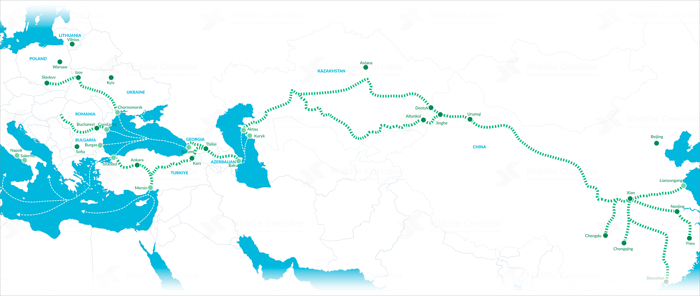China’s changing approach to the Middle Corridor
Since 2022, the Trans-Caspian International Transport Route, or Middle Corridor, has gained significant traction as an alternative trade route between the European Union (EU) and China, particularly in response to shifting geopolitical dynamics. The Middle Corridor is a multimodal land and sea transport route that connects China with Europe by utilizing a combination of rail and sea transport. It stretches from China’s western border through Kazakhstan, across the Caspian Sea via Azerbaijan and Georgia, then through Türkiye, and into the EU.
Amid the ongoing crisis in the Red Sea and the Russia-Ukraine war, the Middle Corridor has emerged as a stable route for China. The Middle Corridor was officially launched in 2013 through multilateral cooperation involving Azerbaijan, Georgia, Kazakhstan, and Türkiye. Its primary aim was to enhance East-West trade connectivity and facilitate the interaction of member countries with key economic hubs such as the EU and China.
Despite the completion of critical infrastructure projects—such as the Trans-Kazakhstan railway in 2014 and the Baku-Tbilisi-Kars (BTK) railway in 2017, which significantly strengthened the corridor’s hard infrastructure—China’s engagement with the Middle Corridor remained minimal during this period. Beijing’s perception of the Middle Corridor can be divided into two phases: the first from 2013 to 2022, and the second from 2022 to the present.
